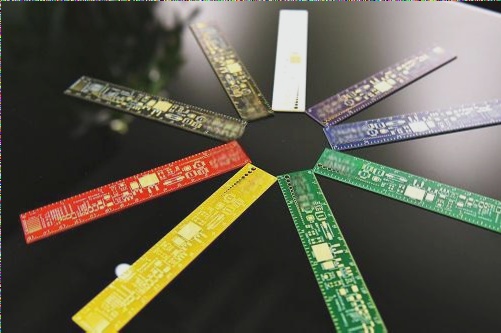Solder Mask is a crucial step in PCB manufacturing. The colored layer you see on the PCB is the solder mask. It is a negative output, meaning that when the solder resist layer is applied to the board, it exposes the copper areas rather than covering them with the solder mask.
There are a total of 9 common solder mask colors available at Wellcircuits. Here is a sample of the Wellcircuits color chart:

Additionally, the Pink, Grey, Orange, and Transparent/Clear options are available under the “Advanced PCB” category.

If you’re interested, you can find more information in our module store.
Paste Mask, also known as solder paste, refers to a stencil used in surface-mount component packaging. It is specifically designed to match the pads of the SMD components. In simple terms, it is a stencil made from the paste mask layer. During the SMT process, a steel plate with holes corresponding to the PCB component pads is used. Solder paste is then applied to the steel plate. When the PCB is positioned under the steel plate, the solder paste flows through the holes, evenly covering each pad with solder. Therefore, the paste mask should not be larger than the actual pad size and should ideally be equal to or smaller than the pad size.

Here are some key differences between solder mask and paste mask:
• The openings in the solder mask layer have no solder mask ink, while the openings in the paste mask layer contain solder paste.
• The solder mask is an integral part of the PCB, while the paste mask is not. The paste mask is used solely for the stencil during the assembly process.
• Solder mask is used to apply solder mask ink, while paste mask is used to apply solder paste.
• Solder mask is applied during the PCB manufacturing process, whereas paste mask is applied during the PCB assembly phase.
• Solder mask comes in various colors, while paste mask is typically gray.
If you have any questions about PCBs or PCBA, feel free to contact us at info@wellcircuits.com.




